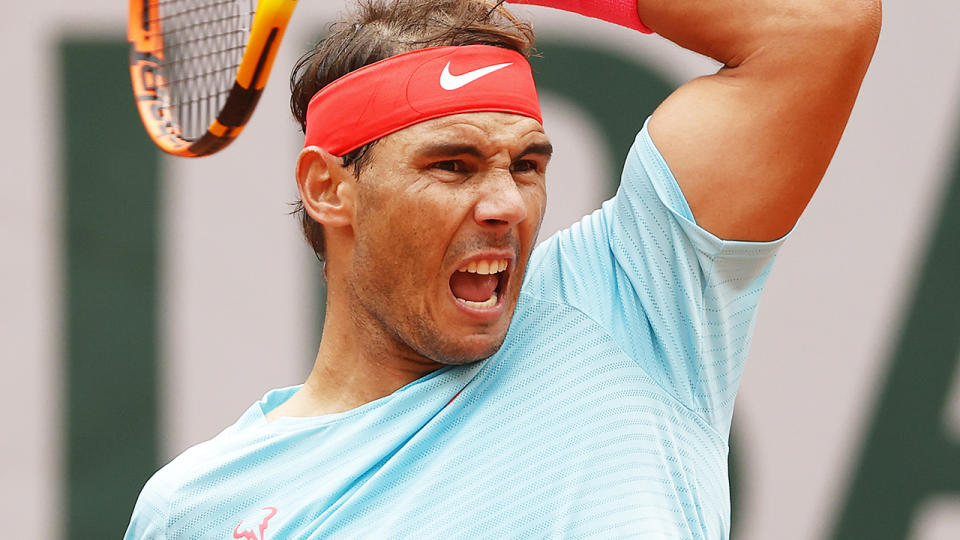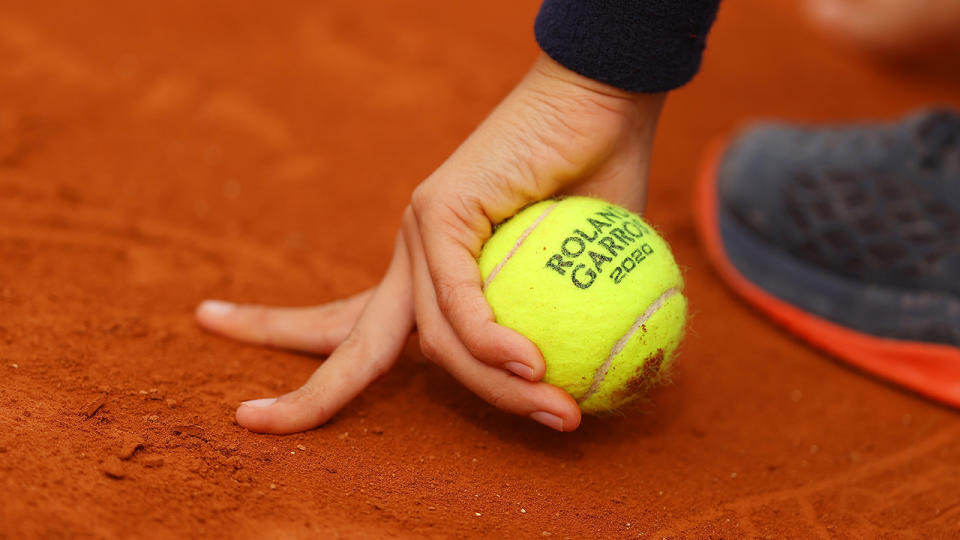'Super-sensitive': Backlash over 'dangerous' Rafa Nadal claims

The manufacturer of new balls being used at this year’s French Open has hit back at concerns from a number of players, most notably Rafael Nadal.
Nadal complained about the “super heavy” new balls in the days leading into the Roland Garros grand slam, saying they could become “dangerous” if players exert extra strain on their bodies to hit them.
'SHOULD BE ASHAMED’: Fans erupt over 'disgraceful' scenes
‘SO SAD’: Fans react to Serena Williams' shock withdrawal
But the ball manufacturer who oversaw their development and testing is so convinced that Nadal is wrong that he’s quietly crossing his fingers that Spain’s “King of Clay” triumphs again, despite the fact that he is sponsored by a rival equipment maker, simply to prove that the balls are just fine.
“Part of me is like, ‘Gosh, I hope Nadal wins, just so it makes this a really moot point’,” Jason Collins, the global product director for racquet sports at Wilson Sporting Goods Co, said in an interview with The Associated Press.
“I'm very confident that when the dust settles on this event, the ball is not going to be what Roland Garros 2020 is going to be remembered for.”
When the tournament announced the selection last November of the Chicago-based manufacturer, replacing French firm Babolat that sponsors Nadal, the coronavirus was unheard of.
Wilson was, by then, already at work tailoring a bespoke ball for the often warm, occasionally rainy conditions expected in May and June of 2020, when the tennis world was due to jet into Paris for the second major tournament of the year.
The pandemic changed all that and the French Open got pushed to September.
Instead of Paris in springtime, players got rain, cold, leaden skies and a sun that sets two hours earlier than in did in May.
Rafa Nadal criticises ‘dangerous’ new balls
The wet and gloomy weather gear has sparked considerable grumbling from some players, and the new ball has taken some of the brunt.
“Some of those balls we were using you wouldn't give to a dog to chew,” British player Dan Evans said after losing a five-set, 3 hour, 49-minute slog on the particularly sodden opening day.
“It's brutal. It's so cold. I think the balls are the biggest thing. Maybe they got it a little wrong with the balls. It's tough to get that ball to go anywhere.”
Before the tournament Nadal said: “You have to take care because with these conditions you can’t practise that much because the ball is super heavy.
“Different brand than last year, a new ball. The ball is much slower than the previous years. If we add these conditions of cold and humidity, then it is super heavy.
“With these conditions it makes things tougher. But I knew before arriving here. So no problem at all. Just accept the challenge.
“(But) I really believe that the organisation need to take a look at that for the next couple of years, for the health of the players too, because the ball is super heavy. (It) becomes dangerous for the elbow and for the shoulders, I think.”

Ball-maker hits back at ‘sensitive’ players
Watching the tournament from Chicago with TV coverage always on, Collins says that while “I don't mean to defend Dan Evans for his comments,” the feedback he got was that the problem lay in the way the balls were handled, not the balls themselves.
Some rolled into tarpaulin covers that are folded at court-side when not deployed to shield them from a soaking, and where rain had puddled.
“The damage is done but the reality is that, yes, some of those balls were literally in a puddle,” Collins told the AP.
“They should have been taken out of play.”
Collins says the new balls are only very slightly different from the previous Babolat balls that also got mixed reviews when they replaced Dunlop at the French Open from 2011.
“From a pure spec perspective, the balls are virtually identical,” Collins said.
“From a weight, from a rebound, from a size, from a deformation perspective, they are very, very close.
“From a weight perspective, it would be less than half a gram. Any time there is a change, these guys and girls are super-sensitive and unfortunately sometimes perception takes over from common sense. This is just one of those times.”
Nadal hasn’t seemed to be affected by the balls during matches, cruising into the third round having dropped just 14 games.
with Associated Press
Click here to sign up to our newsletter for all the latest and breaking stories from Australia and around the world.

